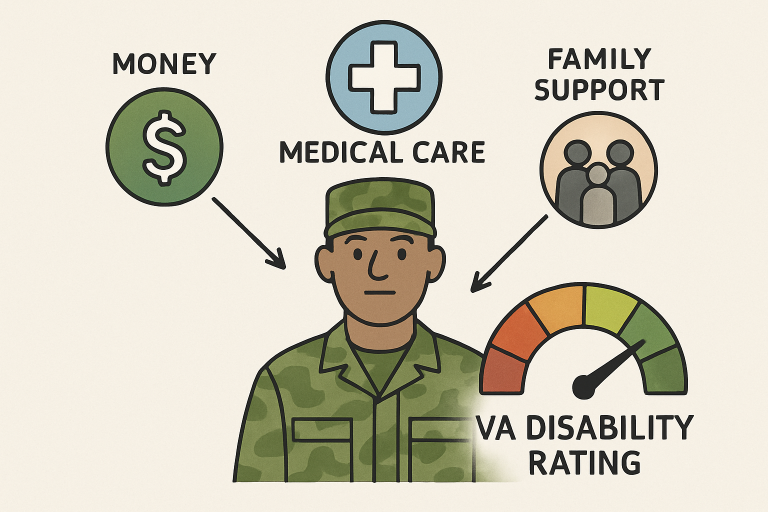VA disability ratings significantly impact veterans’ daily lives by determining their benefits and support for service-connected conditions. They influence access to healthcare, vocational rehabilitation, housing assistance, and educational opportunities. A higher disability rating often leads to more comprehensive resources, improving quality of life and easing challenges. Understanding these ratings helps veterans navigate the system and make informed decisions about care and benefits. VA disability ratings are a vital link to services and support that help veterans thrive post-military service.
VA disability ratings are crucial in shaping the daily lives of millions of US veterans. Assigned by the VA, these ratings determine compensation and benefits, impacting household finances and healthcare availability, even for those with low or non-compensable disabilities. Understanding how ratings work is crucial for an in-depth look at benefits for veterans with a 0% disability rating, as they can still unlock necessary support and services.
Even smaller ratings can have significant impacts. Navigating the complexities of these ratings and the associated benefits is essential for every veteran interested in optimizing their well-being and planning for the future. From monthly compensation to specialized healthcare access, the implications reach far beyond the initial disability determination.
Table of Contents
Understanding VA Disability Ratings
VA disability ratings are expressed as a percentage, ranging from 0% to 100%, in increments of 10%. The rate reflects the severity of a veteran’s service-connected condition and its impact on overall health and daily functioning. By reviewing medical evidence and adhering to criteria established by the VA Schedule for Rating Disabilities (VASRD), claims examiners determine how much a condition limits a veteran’s ability to work and perform everyday activities. Even a 0% rating, which means the VA acknowledges a service-linked condition but assigns no monthly payment, can open doors to vital support programs, healthcare, and future reviews for increases if the condition worsens.

Financial Implications of Disability Ratings
The disability rating assigned to a veteran is the foundation for determining tax-free, monthly compensation. For instance, as of 2023, a veteran with a 50% rating receives about $1,041.82 per month, while those rated at 100% can receive over $3,600 monthly. These payments provide essential income support, especially for those whose injuries limit earning potential.
Nonetheless, financial outcomes for veterans vary widely. Studies have shown that while veterans with minor service-connected disabilities may earn more than their civilian peers, those with severe disabilities often fall behind other veterans in income. This reveals the sometimes challenging economic landscape those with significant injuries face, accentuating the importance of seeking all available benefits and resources for stability.
Healthcare Access and Disability Ratings
Beyond compensation, disability ratings also establish a veteran’s priority group for healthcare access within the VA system. Veterans with ratings above 50% often qualify for Priority Group 1, unlocking access to comprehensive medical care, prescription coverage, and specialty services with minimal or no co-pays. Such benefits can be life-changing for those managing complex or chronic health issues.
Even at lower ratings, veterans may be eligible for essential healthcare services, mental health support, and preventive care. Variations in ratings are directly tied to cost savings and access to critical resources, making it necessary for veterans to understand precisely what their rating affords regarding healthcare coverage and options.
Employment Challenges and Opportunities
Many veterans face barriers to steady employment due to the physical or psychological impacts of service-related injuries. The VA responds to these challenges with programs like Total Disability Individual Unemployability (TDIU), which compensates veterans at the 100% disability rate if they cannot work—even if their official rating is lower. The Vocational Rehabilitation and Employment (VR&E) program helps disabled veterans gain new skills, adapt workplaces, or launch entrepreneurial ventures, supporting career growth aligned with their abilities and limitations.
Social and Family Life Impact
Service-connected disabilities extend their effects into veterans’ homes and communities. Some veterans may struggle with social isolation, communication difficulties, or relationship stressors stemming from their health issues. Family members and caregivers are often deeply involved in daily life, shouldering additional responsibilities to provide support.
Family counseling, peer support, and community advocacy groups can be a lifeline for veterans and their loved ones. Understanding and leveraging these resources allows families to better cope with the ripple effects of disability and foster resilience together.
Successfully claiming and maximizing VA disability benefits often depends on navigating a complex bureaucracy. The process can be overwhelming, from filing initial claims to understanding appeals and securing healthcare appointments. Fortunately, many veterans’ organizations and VA-accredited representatives provide free or low-cost guidance, helping veterans avoid common pitfalls and delays.
Staying current with required paperwork, gathering thorough medical documentation, and knowing when and how to appeal unfavorable decisions are all crucial. Proactive engagement with reputable organizations can dramatically improve outcomes.
